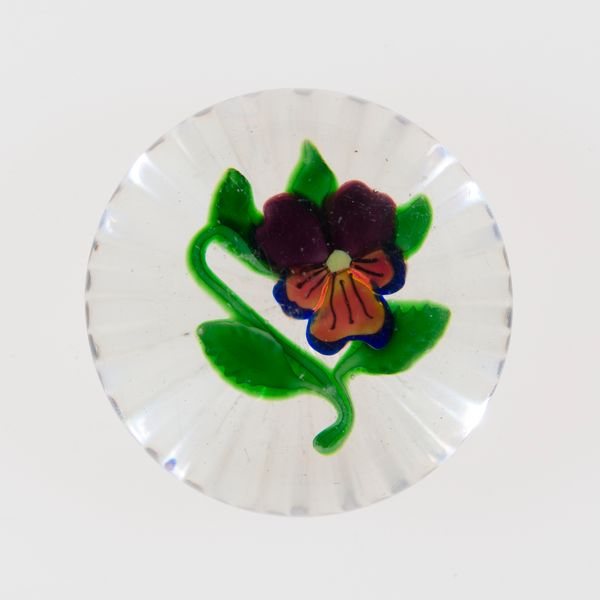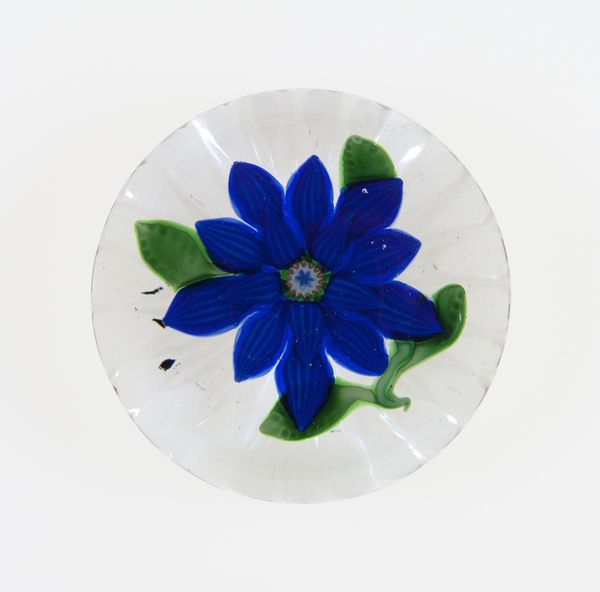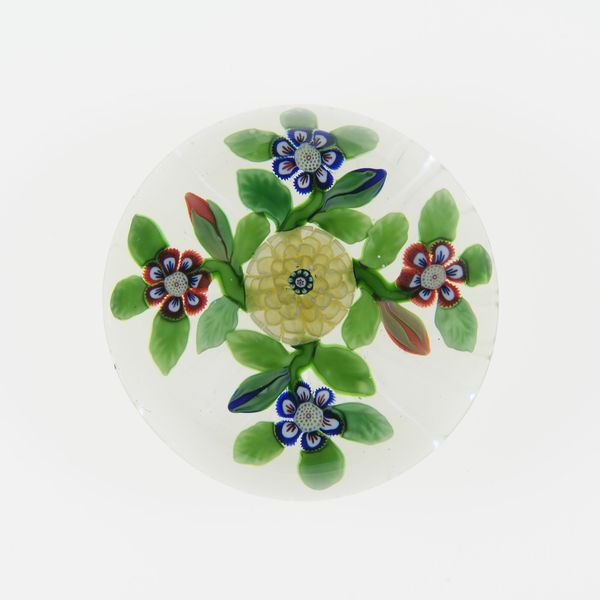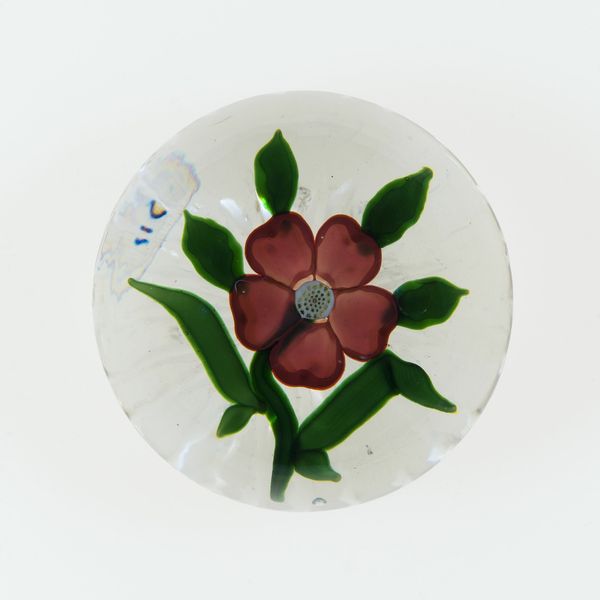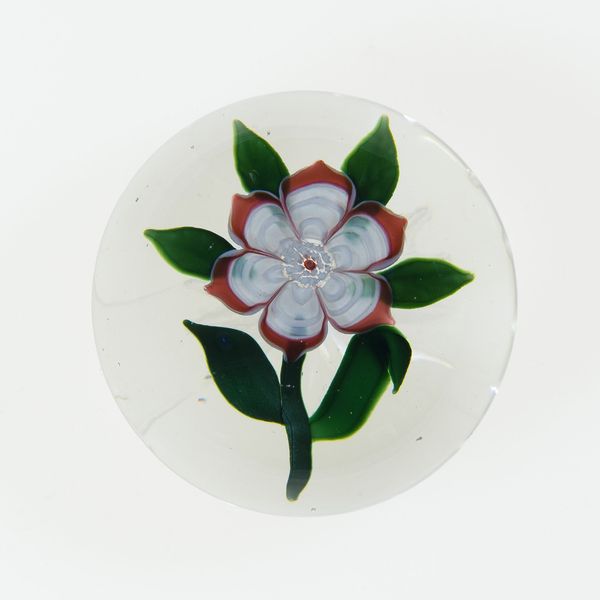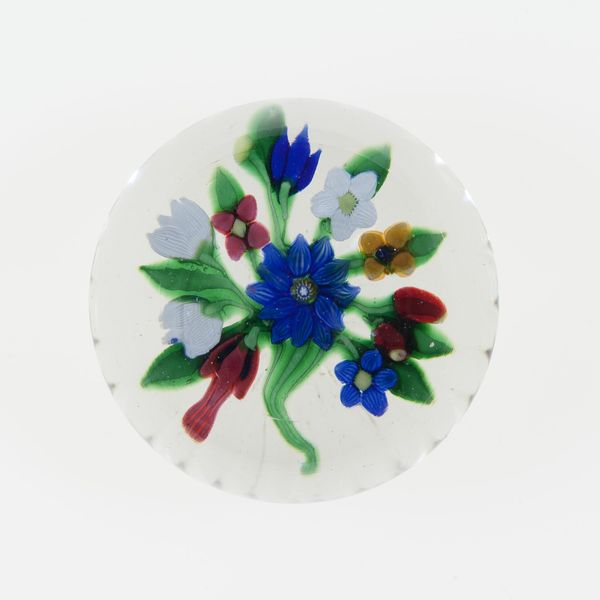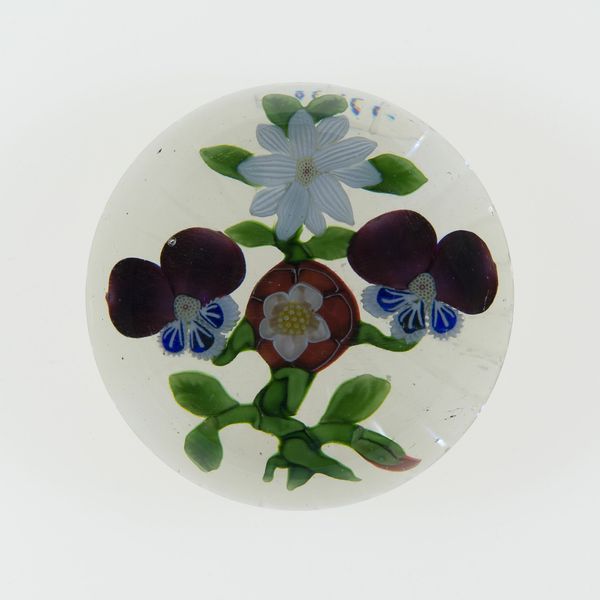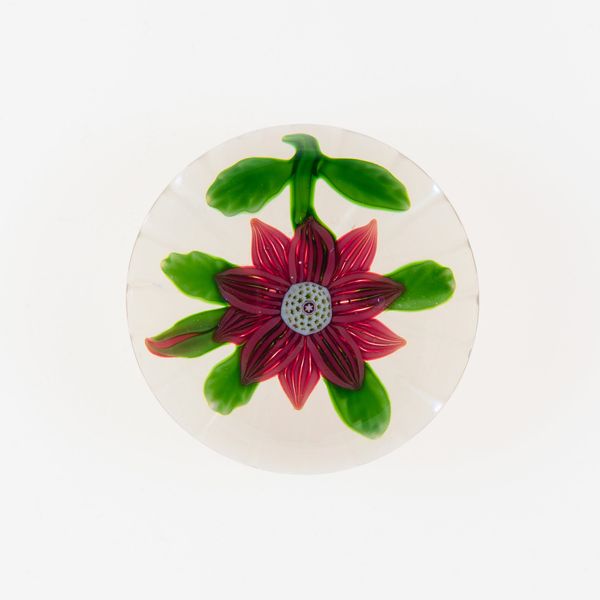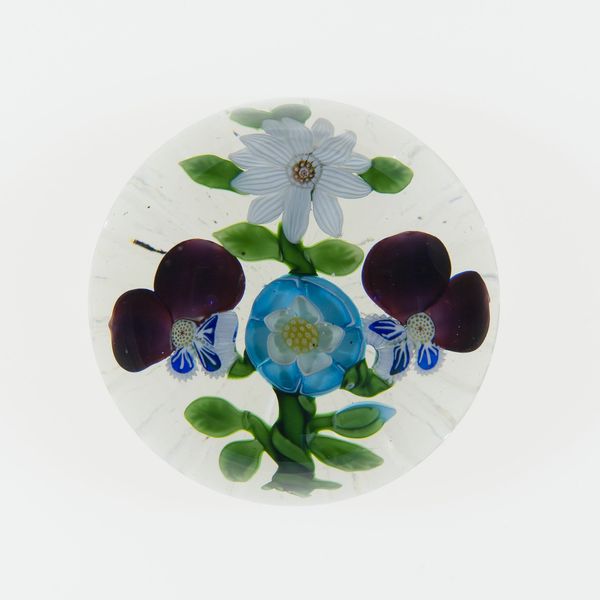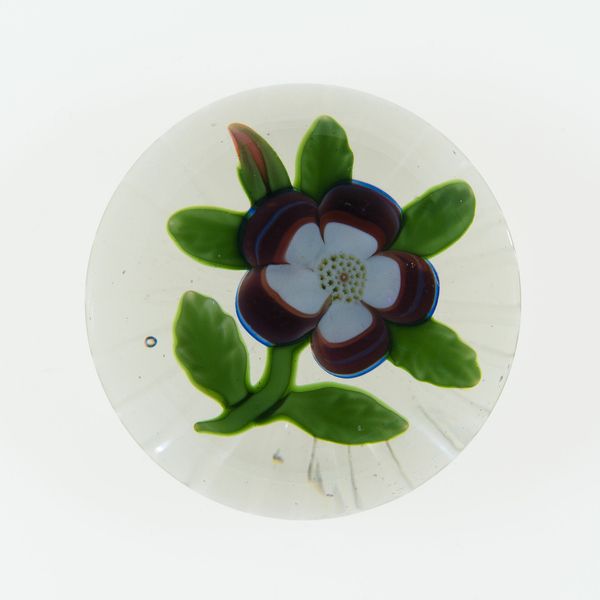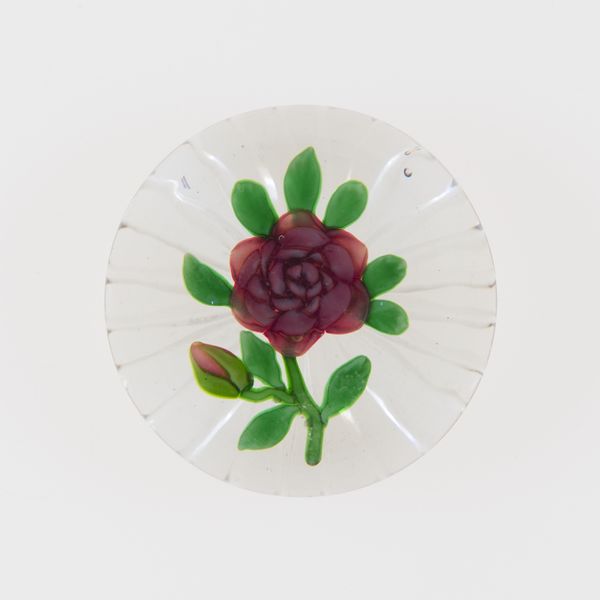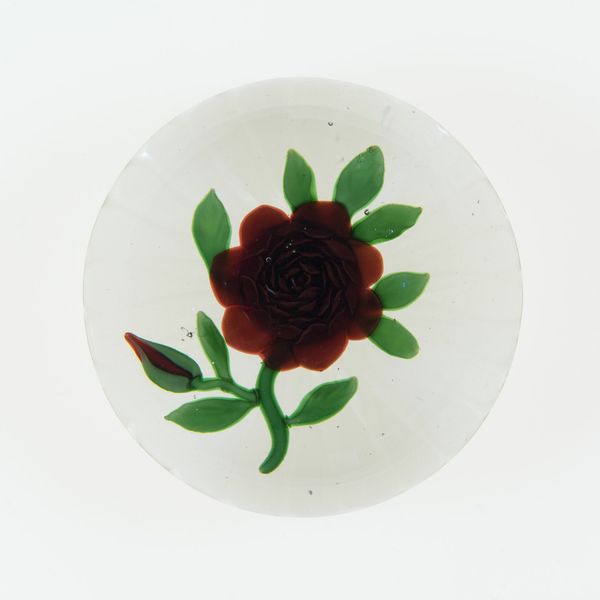
Dimensions: Diam. 6.4 cm (2 1/2 in.)
Copyright: Public Domain
Editor: This is the Paperweight by Baccarat Glassworks, dating from around 1845 to 1860. It's currently held at The Art Institute of Chicago. I'm struck by how delicate the flower design appears within the solid glass form. What are your thoughts on this piece? Curator: What I see is not merely a decorative object, but a testament to industrial processes and consumption patterns of the mid-19th century. The materials themselves—the specific types of glass, the pigments—reveal much about the manufacturing capabilities of Baccarat and their access to global trade networks. Consider the labor involved, the highly skilled glassworkers, and the resources dedicated to creating such an object. Editor: So, you're less focused on the artistry of the flower and more on how it reflects broader societal trends? Curator: Precisely. It's easy to get caught up in the "beauty" of the object, but I challenge that notion. We should investigate the conditions that made this beauty possible. The rise of the middle class with disposable income allowed for mass consumption of luxury items. It begs the question of how craft transformed from a practice to a marketable product. Do you see this as high art or something else? Editor: I suppose I’d never thought of a paperweight as “high art”. To me it seems it toes the line between craft and commercial product. It’s beautiful, sure, but functional and likely produced in large quantities. I see what you mean about shifting our perspective. I am now also wondering about what impact this craftmanship had in glassblowing. Curator: Exactly! Considering that a beautiful item might mask unfair or harsh realities makes one think about commodity itself. And it is vital to think about sustainability in craft and art. Editor: That’s a very different way of looking at it! I think I’ll see paperweights differently now. Thank you!
Comments
No comments
Be the first to comment and join the conversation on the ultimate creative platform.
